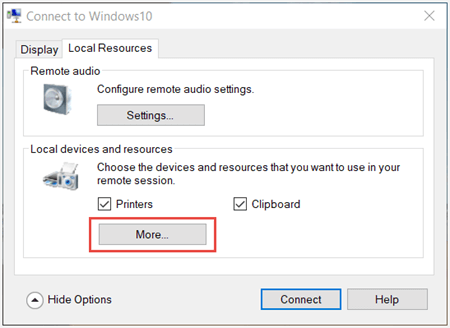

- #Transfer files from local to virtualmachine how to#
- #Transfer files from local to virtualmachine install#
- #Transfer files from local to virtualmachine full#
I followed the steps provided from various help articles, but they were quite tricky and not straightforward and easy to implement. It needs some steps before you can use host drives and folders (and surely all the files contained in them). However, sharing host drives\folders might not be as simple as clicking and enabling sharing. VM does not provide usage of host drives/folders on Guest OS until they are explicitly shared. Once downloaded, setup a Guest OS (for which you can follow VM VirtualBox's provided instructions - installing Guest OS is not discussed here). One of these free VM managers is Oracle's VM VirtualBox, which can be downloaded from Oracle's website for all popular operating systems, such as Linux, Windows and Mac.
#Transfer files from local to virtualmachine install#
Most people like to get free VM managers, so that they can install as many operating systems as they like over the host operating systems. However, the main functionality of all VMs are the same. If your virtual machine becomes compromised, the malware could potentially escape your virtual machine by infecting files in your shared folders.There are several virtual machine managers present in the market. One of the great things about virtual machines is that they operate in their own sandbox-isolated from your real computer. Be careful when using shared folders, though. If you have multiple virtual machines, you’ll need to set up file sharing separately inside each one, although you can use the same shared folders within multiple virtual machines.
#Transfer files from local to virtualmachine how to#
If you’re unsure how to find that, check out our guide to understanding the Linux directory structure. On a Linux guest system, you should find VMware Shared Folders under /mnt/hgfs in the root directory. RELATED: The Linux Directory Structure, Explained If you’re using a Windows guest operating system, open File Explorer, select “Network”, and then look under the “vmware-host” computer. You should now see the shared folders appear as network file shares.

When you’re done, click the “Finish” button. Select the “Read-only” option if you want the virtual machine only to be able to read files from the shared folder, but not modify them.
#Transfer files from local to virtualmachine full#
If you don’t, the share is still added to your list of shares and you can enable it later on an as-needed basis. By default, the virtual machine will have full read-write access to the folder. On the “Specify Shared Folder Attributes” screen, select the “Enable this share” option. Select the “Enabled until next power off or suspend” if you prefer to manually re-enable the feature after restarts. Select “Always enabled” if you want the Shared Folders feature to stay on even when you restart the virtual machine. Shared folders are disabled by default, and you can enable them in one of two ways. In the “Virtual Machine Settings” window, switch to the “Options” tab and select the “Shared Folders” setting on the left-hand side. Open the “Player” menu, point to the “Manage” menu, and then select the “Install VMware Tools” option. This opens a dialog prompting you to download the tools and, when finished, inserts a virtual CD that you can use within the guest operating system to install the VMWare tools.Īfter the VMware tools are installed, open the “Player” menu, point to the “Manage” menu, and then select the “Virtual Machine Settings” option. To use the feature, you first need to install VMware Tools in the guest virtual machine. VMware’s Shared Folders work with both Windows and Linux guest operating systems.


 0 kommentar(er)
0 kommentar(er)
